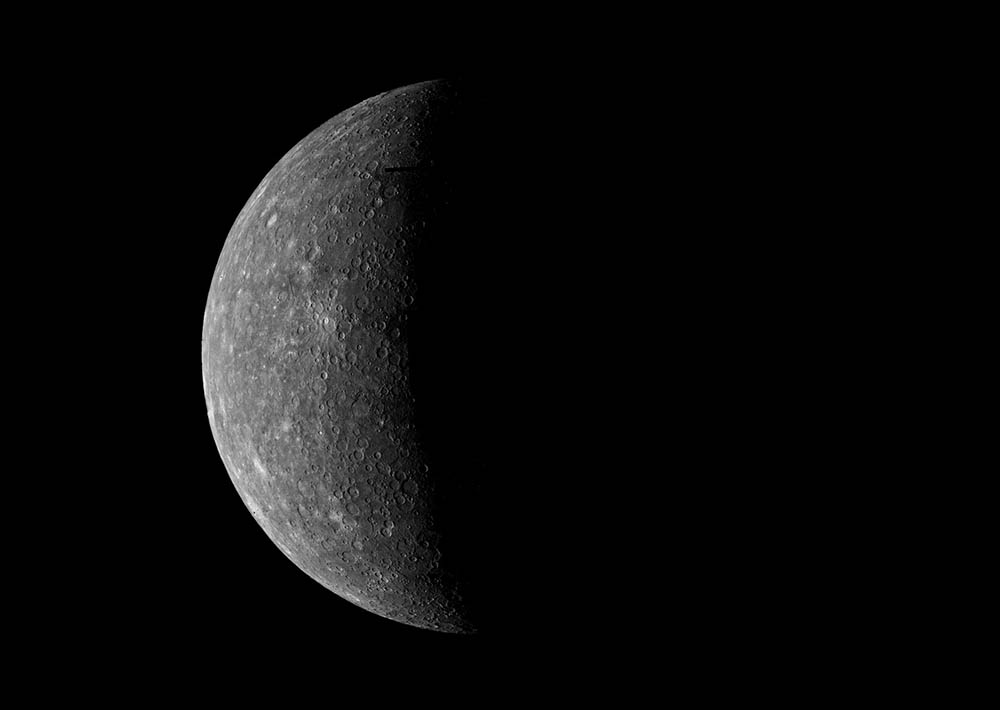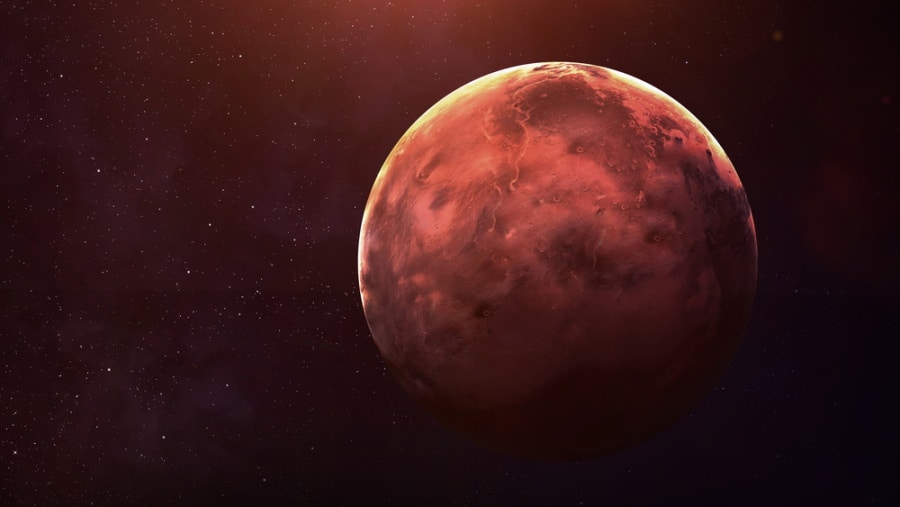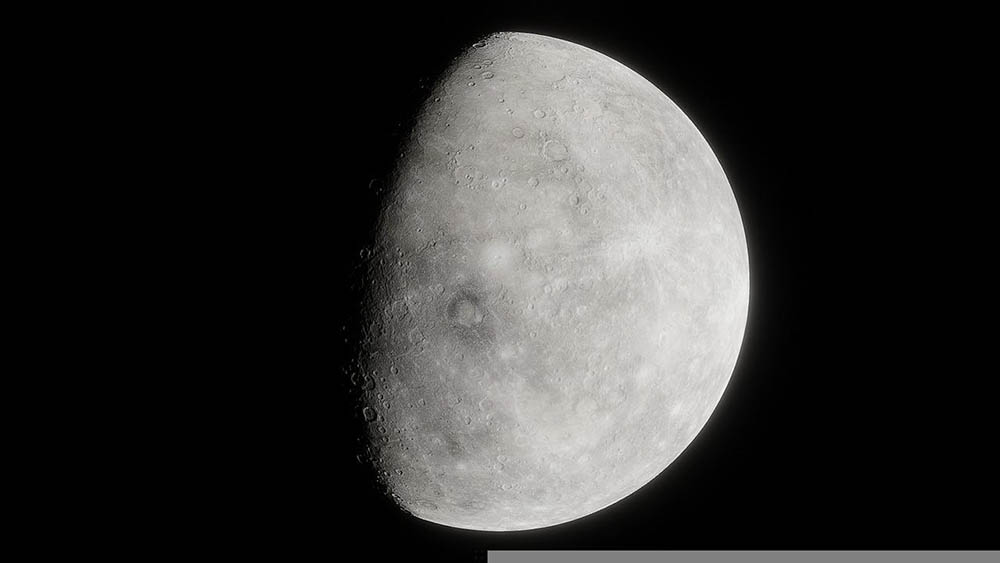How Long is a Day on Mercury? How Long is a Year?
Last Updated on

Mercury is the smallest and first planet in our solar system, making it the planet that is closest to the sun. But exactly how long is a day on Mercury? How long is a year? And how do those numbers compare to our days and years here on Earth?
One day on Mercury is about 59 Earth days, whereas one year is about 88 Earth days. But why is Mercury’s day longer than Earth’s but the year is shorter? Continue reading to learn why this is the case, as well as some additional fun facts about Mercury.

A Mercurian Day
Because Mercury rotates about its axis extremely slowly, its day is approximately 59 Earth days long. This means that if Mercury has any life (scientists don’t believe it does), its residents will have to wait nearly a month to go to bed. Since Mercury orbits the Sun on an elliptical orbit and rotates on its axis relatively slowly, the Sun appears to perform a loop in the sky when viewed from Mercury!

A Mercurian Year
On average, Mercury’s orbital velocity is 29.43 miles per second, meaning it takes about 88 days for it to complete its highly elliptical orbit around the Sun. Because Mercury is so close to the Sun, it experiences constant fluctuations in its speed, called librations. This is because the Sun’s intense gravitational pull changes Mercury’s speed depending on how close the planet is to it. Scientists also think that Jupiter, the largest planet in our solar system, could also be influencing Mercury’s orbit, tugging on it from hundreds of millions of miles away.
Discovery of Mercury
Because Mercury is so close to the Earth and able to be observed with the naked eye, no one is officially credited with discovering the planet. Thus, ancient civilizations were already aware of Mercury’s existence, with many of them associating the planet with their various gods. However, the first people to see Mercury with a telescope included Thomas Harriot and Galileo Galilei, a pioneering Italian astronomer, in 1631.
Of the terrestrial planets, Mercury has been visited the least by spacecraft sent from Earth. However, we have sent two uncrewed space probes to the planet, including Mariner 10 and MESSENGER (Mercury Surface, Space Environment, Geochemistry, and Ranging). Mariner 10 was the first spacecraft to visit Mercury and flew past the planet three times in 1974 and 1975.
MESSENGER, however, orbited the planet for more than four years, beginning in 2011. This mission, in particular, taught us more about Mercury’s surface composition, geological history, magnetic field and found evidence of water-ice at its poles.

Other Mercury Facts
Mercury is the smallest and first planet in our solar system, at a position about ⅓ of Earth’s distance to the Sun. This rocky, terrestrial planet looks much like our Moon, with a mean diameter of 3,032 miles and a heavily cratered surface. Because Mercury has a fragile and almost negligible atmosphere, nothing is protecting it from a barrage of meteor impacts. Thus, Mercury also has the most craters in the solar system, with scientists naming 414 of them as of 2021.
Interestingly, Mercury’s craters are named after famous writers, artists, and composers, with the largest crater being the Caloris Basin. This giant crater was formed from a meteor impact roughly 3.8 billion years ago, which left an impression of about 950 miles in diameter. To put the Caloris Basin’s size into perspective, it is estimated that it could hold part of Europe from Portugal to as far west as Germany.
Due to Mercury’s small size and close proximity to the Sun, it cannot hold onto any moons like its neighbor Venus. Mercury is also one of the four terrestrial planets in the solar system, with scientists estimating its composition to be about 70% metallic and 30% silicate. This planet also sports an iron core, which may be the key to solving a mystery that has been puzzling astronomers for years.
Based on observations, we know that Mercury is slowly shrinking, with a diameter about 9 miles smaller than it was 4 billion years ago. Scientists think this might be due to Mercury’s iron core cooling down and transforming into a solid, which is hypothesized to be shrinking the planet’s volume.
Summary
Mercury is one of the most interesting terrestrial planets in our solar system and is characterized by a cratered, rocky surface just like our Moon. It orbits the Sun in a highly elliptical orbit, with a super long day and a comparatively short year. Scientists do not believe it can support life because Mercury has a harsh environment, complete with extreme temperature fluctuations, violent solar radiation, and little to no atmosphere or magnetic field. For this reason, we’ve only been able to send two space probes to Mercury, both of which have taught us a lot about its formation and geological characteristics.
However, because Mercury is so fascinating, the European Space Agency currently has a spacecraft en route to it named BepiColombo. This spacecraft will help scientists understand more about Mercury’s composition, atmosphere, magnetosphere, and history by employing two individual orbiters. These include the Mercury Planetary Orbiter (MPO), which will map the planet’s surface, and the Mercury Magnetospheric Orbiter (MMO), which will investigate its unique magnetosphere.
You might be interested:
Featured Image Credit: NASA, Unsplash
About the Author Robert Sparks
Robert’s obsession with all things optical started early in life, when his optician father would bring home prototypes for Robert to play with. Nowadays, Robert is dedicated to helping others find the right optics for their needs. His hobbies include astronomy, astrophysics, and model building. Originally from Newark, NJ, he resides in Santa Fe, New Mexico, where the nighttime skies are filled with glittering stars.
Related Articles:
How to Collimate Binoculars: 9 Expert Tips
How to Clean a Refractor Telescope: Step-by-Step Guide
How to Clean a Telescope Eyepiece: Step-by-Step Guide
How to Clean a Rifle Scope: 8 Expert Tips
Can You Use Binoculars to Look At Stars? How to Choose the Right Pair
How to Choose Binoculars for Bird Watching: 10 Expert Tips
15 Crucial Facts About Ultraviolet Rays & the Sun
What Constellation Is Spica In? The Interesting Answer!
